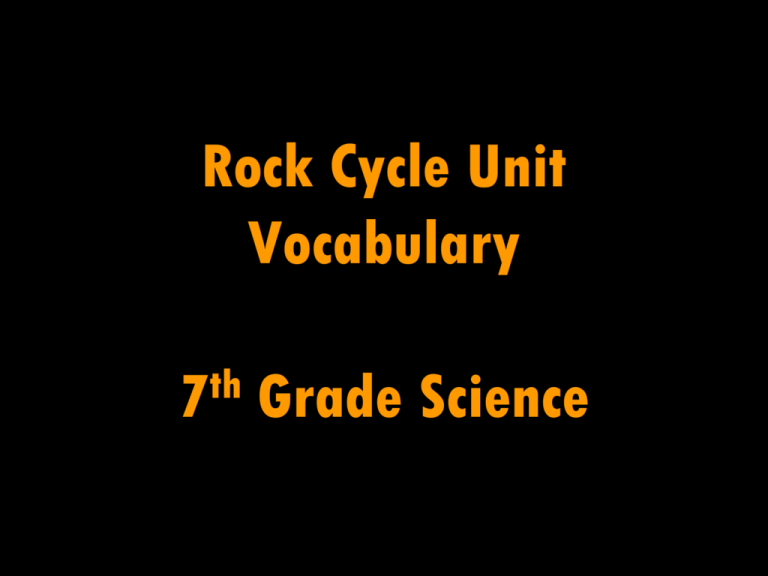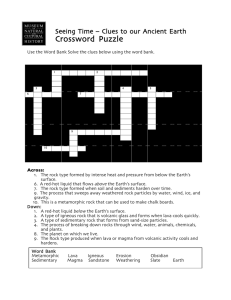Rock Cycle Unit Vocabulary 7th Grade Science
advertisement

Rock Cycle Unit Vocabulary th 7 Grade Science Weathering • The breaking down of Earth’s materials by natural processes (water, wind, ice, chemicals, etc.) into smaller pieces or sediments Erosion • Weathered rock and soil particles are moved from place to place by water, wind, or ice Deposition • Weathered sediments are laid down in a new location helping create new landforms or rocks Melting • Caused by heat and pressure around the rock to form magma Solidification • Magma or lava cools and hardens Recrystallization • Through heat and pressure, the rock’s atoms and crystals are rearranged Igneous Rock • Formed from the cooling and solidification of magma or lava • 2 Types – Extrusive Igneous Rock – Intrusive Igneous Rock Extrusive Igneous Rock • Formed above ground from lava cooling and hardening • Characteristics from Cooling Quickly – Small or no crystals – Fine-grained texture Intrusive Igneous Rock • Formed below ground from magma cooling and hardening • Characteristics from Cooling Slowly – Large or small crystals – Coarse-grained texture Sedimentary Rock • Formed from sediments (rock fragments, mineral grains, animal or plant remains) that are pressed or cemented together • 3 Types – Clastic Sedimentary Rock – Organic Sedimentary Rock – Chemical Sedimentary Rock Law of Superposition • States that layers and fossils on top are younger than lower layers • Strata – horizontal layers formed from deposited sedimentary rock • Stratification – process of arranging sedimentary rocks into layers Youngest Rocks Here ! Oldest Rocks Here ! Metamorphic Rock • Rock changes due to intense heat and high pressure then recrystallizes – Not heated enough to melt the rock • 2 Types – Foliated Metamorphic Rock – Non-Foliated Metamorphic Rock Bands (CAN) Form = Foliated Metamorphic means “changed” The Rock Cycle







